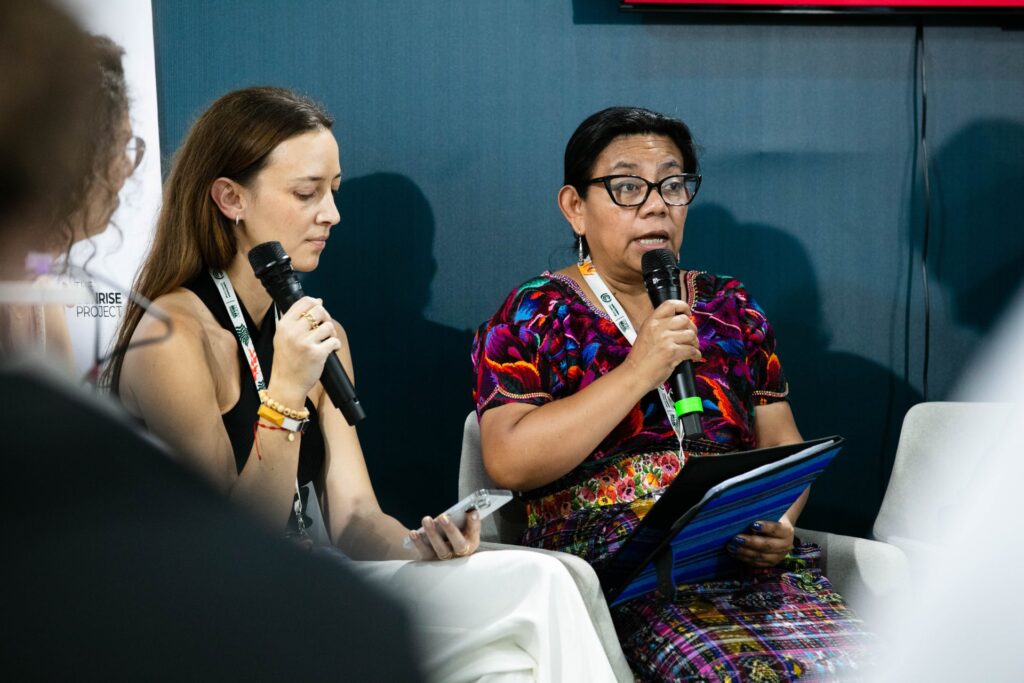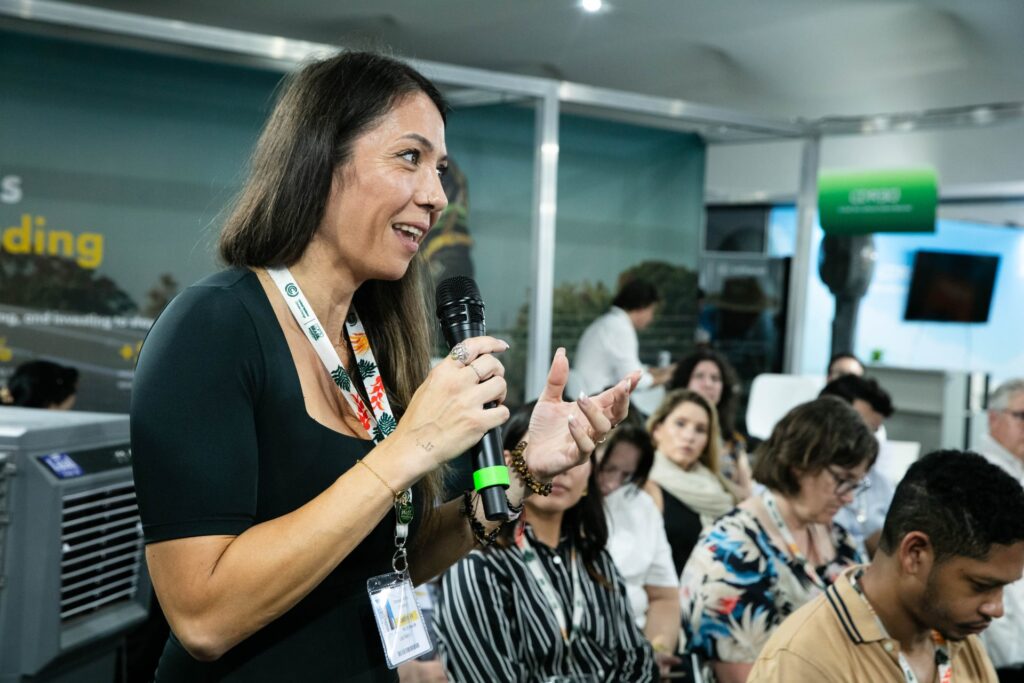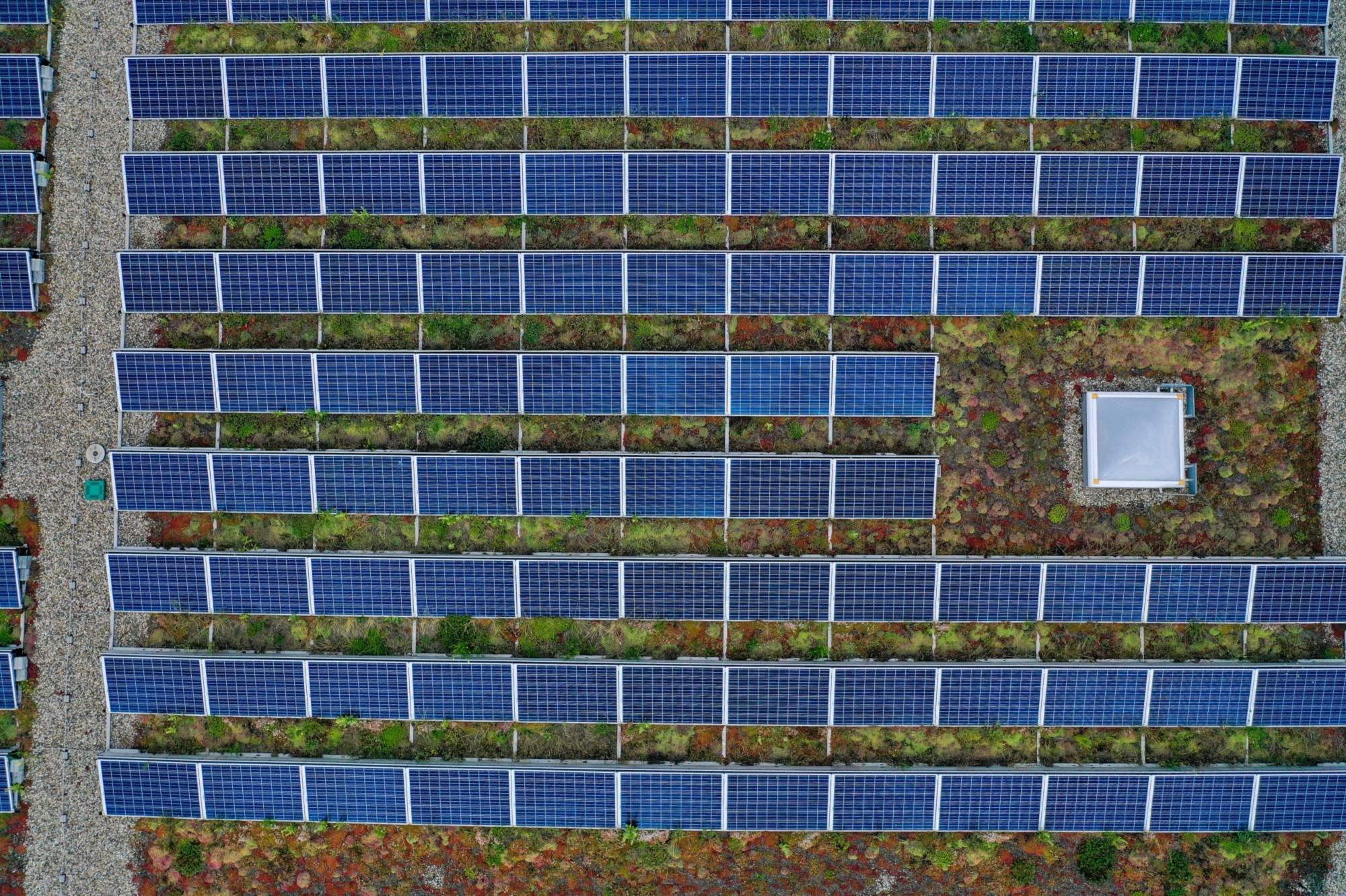3 takeaways from Belém: how SMEs are at risk – but are also the solution
Pamela Jouven, Director, SME Climate Hub

COP30 reminded me that we’ve come a long way over the past few years.
After decades of inattention, the climate impact of small and medium-sized enterprises (SMEs) has finally become a prominent part of business climate action.
That’s why we were thrilled to host “SMEs at Risk, SMEs as Solution” at COP30 in Belém, Brazil. The event brought together entrepreneurs, Indigenous leaders, researchers, and policymakers to explore what SMEs need to adapt, compete, and thrive in a rapidly changing climate. Three distinct themes emerged:
1. SMEs are essential to resilient economies

SMEs are the bedrock of global commerce. They represent 90% of businesses worldwide and 70% of the global workforce. They are crucial to climate action, also because they are responsible for a major share of global emissions.
Also, many SMEs operate in highly vulnerable areas prone to flood and fire, as Vinicius Lages of SEBRAE, Brazil, pointed out. This makes adaptation essential, as their vulnerability to climate change poses a systemic risk.
While acknowledging the need to go “further and faster,” Matt Toombs from the UK government noted in his opening remarks that government support in the country has contributed to rapid climate action among SMEs, with a significant increase in companies joining the Race to Zero—6,000 in the UK alone.
2. SMEs are already delivering solutions

Small businesses are not just victims of the climate crisis. They are active agents in building a sustainable global economy, as powerful drivers of innovation. For example, Fernando de Lucca Pezella of Ceres Seeding shared how his small company got started using drones and remote technologies to scale up ecological restoration projects in Brazil.
“The ecological restoration market is really new, so we didn’t have many innovative technologies originally,” Fernando explained. “As carbon markets started reaching Brazil and big companies are investing in protecting biodiversity, SMEs like us started to be born.”
Of course, not all climate solutions are brand new. Some have existed for thousands of years. María Tuyuc, President of the Global Network of Indigenous Entrepreneurs (REI) in Guatemala, highlighted the vital role of ancestral knowledge and regenerative models such as diversified agriculture, circular networks, and seed conservation.
“The Indigenous relationship to the land is a competitive advantage,” she said. “Regenerative business models reduce emissions without requiring large investments.”
In China, SMEs are contributing to growing green supply chains. Yue Pan from the University of Helsinki noted that the national green transition in China is dependent on these smaller players. Chinese SMEs in the solar and hydrogen sectors are already retooling their strategies to export low-carbon technologies and support green supply chains worldwide.
3. SMEs need an enabling environment

To unlock and accelerate the full potential of these enterprises, governments and large corporations must provide support.
This starts with capacity-building and training. In China, Yue said, 40% of SMEs in China’s well-developed Guangdong Province do not have access to the information they need for the green transition.
One way China is working to reverse this is by building green zone industrial parks, which SMEs can apply to join. Over the past several years, these parks have significantly reduced local emissions.
“The barriers are there, but there are also benefits,” Yue said. “The national green transition depends on SMEs taking action to meet the national KPIs. If they can take advantage of green solutions, they’ll be in a stronger financial position.”
Access to financing is key. Fernando Pezzella stressed SMEs’ limited access to green finance and the need for greater risk-taking from investors.
“Investing in SMEs might be risky, but it’s the entrepreneurs who are taking the biggest risks,” said Fernando.
Vinicius Lages explained how SEBRAE facilitates capacity building for SMEs by matching them with large corporations with deep, sector-specific expertise. Fernando Pezzella gave a concrete example of this strategy, where large corporates like Coca-Cola and AB InBev created a cohort of climate solutions-providing SMEs (including Ceres Seeding) to help them meet their own decarbonization goals.
María Tuyuc argued that Indigenous entrepreneurs need policies that recognize their economy as a formal sector and include them in public procurement. She stressed the importance of policies and certifications adapted to Indigenous SMEs’ territory, and not penalizing traditional methods of production.
“Indigenous-owned SMEs aren’t asking for special treatment,” María said. “They are a critical part of climate solutions and want to be treated as such.”
During the event, the SME Climate Hub shared its Open Letter to Heads of Delegation at COP, calling on governments to formally recognize SMEs as a distinct and critical stakeholder group for climate action and provide adequate support.
While SMEs face unique challenges, their collective impact and innovative capacity should be seen as assets toward meeting net zero. As Jen Austin from the Climate High-Level Champions said in her closing remarks, “SMEs may be small individually, but collectively they are a powerful force in the global transition.”

 Go back
Go back





